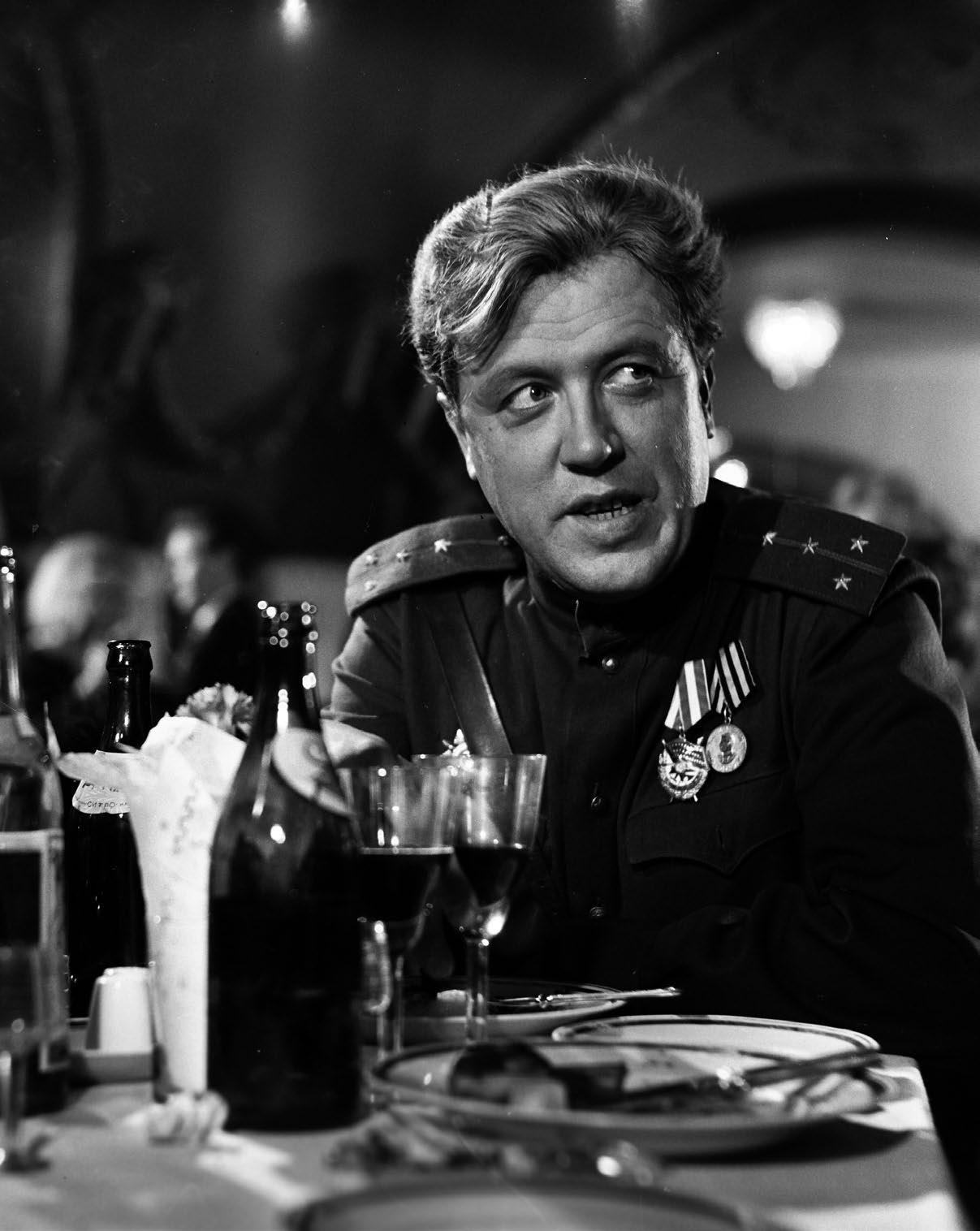
2 minute read
Downward SPIRAL
Johannes Lõhmus analyses the innovative aspects of Grigori Kromanov’s debut feature film What Happened to Andres Lapeteus? from 1966.
By Johannes Lõhmus Photos by Estonian Film Institute & Film Archive of the National Archives of Estonia
What Happened to Andres Lapeteus? was pioneering in Estonian cinema history in several ways.
First, it was the debut feature film of Grigori Kromanov. Second, it was the first domestic film to try and analyse the heritage of the Stalinist personality cult, and its influence on communist society.
Third, never had an associative montage been used in this kind of manner before, tying different timelines together into a coherent whole. Fourth, a warning label was added to a film poster for the first time, giving it a 16+ rating, because of the abundant erotic undertones in the film. Fifth, the film perplexed the audience with the fact that Kromanov had decided to leave it open-ended and that was rarely done in Soviet cinema, because cinema was an instrument of propaganda and the message had to be as singular as possible. In its historical context, What Happened to Andres Lapeteus? was a remarkable work that has successfully stood the test of time, and acquires more and more layers of meaning in our current conflicted atmosphere of the first half of the 21st century.
In the following article, I will concentrate on the five aspects mentioned and hope to create some space for serious discussion about the place of this film in world cinema, amongst the films dealing with similar problems and themes, using similar stylistic means. As this kind of discussion can only take place after seeing the film, it is a pleasure to state that the Estonian Film Institute together with the National Archive’s film archive have recently restored the film digitally.
WHO WAS GRIGORI KROMANOV?
Grigori Kromanov (1926-1984) was an actor by profession who was forged into a director in Estonian Television. He was constantly at odds with the Soviet cultural policies because of his uncompromisingly thorough nature as an artist, and would therefore direct only five feature films during his career. But if there is a director worthy of a grandmaster’s title, it is Kromanov. The psychological depth of his characters, the scale of his shooting sets, and dedication to the intricacies of film directing allow us to position him side by side with Stanley Kubrick and David Lean, as their Soviet Estonian compatriot who shares their sensibilities and thematic concerns. All of them are joined together by a grandiose mindset, utmost thoroughness, and fearlessness to demand the near impossible to execute their vision.
Kromanov’s first film was The Misadventures of the New Satan (1964), co-directed with Jüri Müür, and heralded as the greatest Estonian film ever upon release.1 What Happened to Andres Lapeteus? (1966) was Kromanov’s first film where, as a director, he was solely responsible for the result. The Last Relic (1969), Diamonds for the Dictatorship of the Proletariat (1975) and Dead Mountaineer’s Hotel (1979) followed suit. All his films were seen by millions of people all over the Soviet Union, they were distributed to dozens of countries abroad, proving Kromanov’s ability to address a wide and versatile audi-










